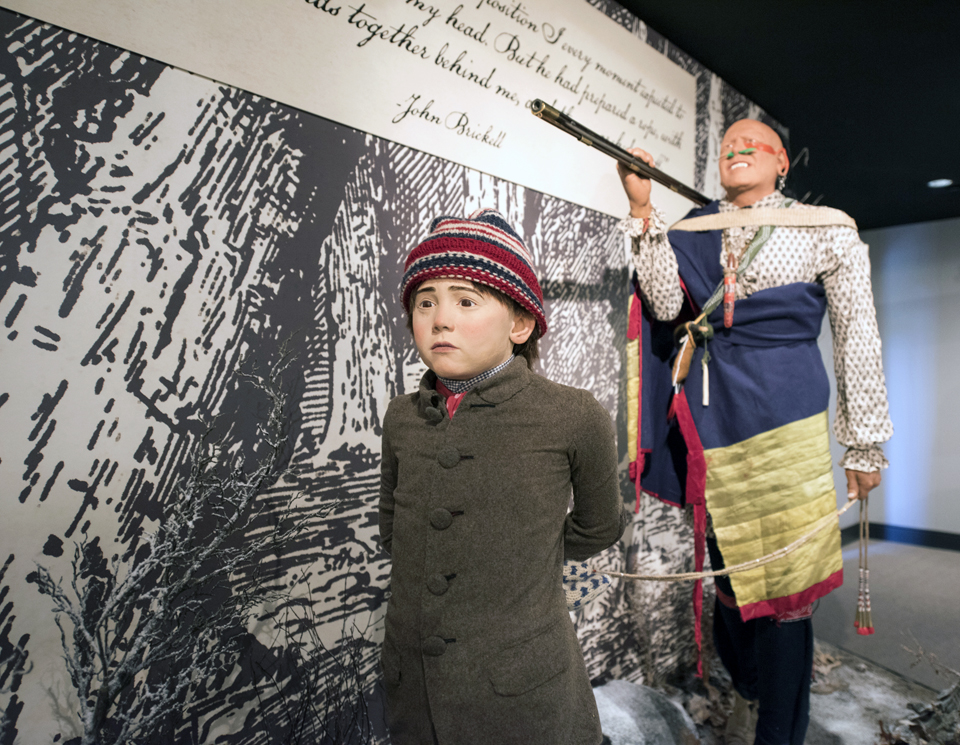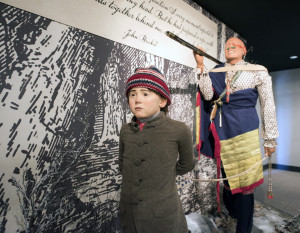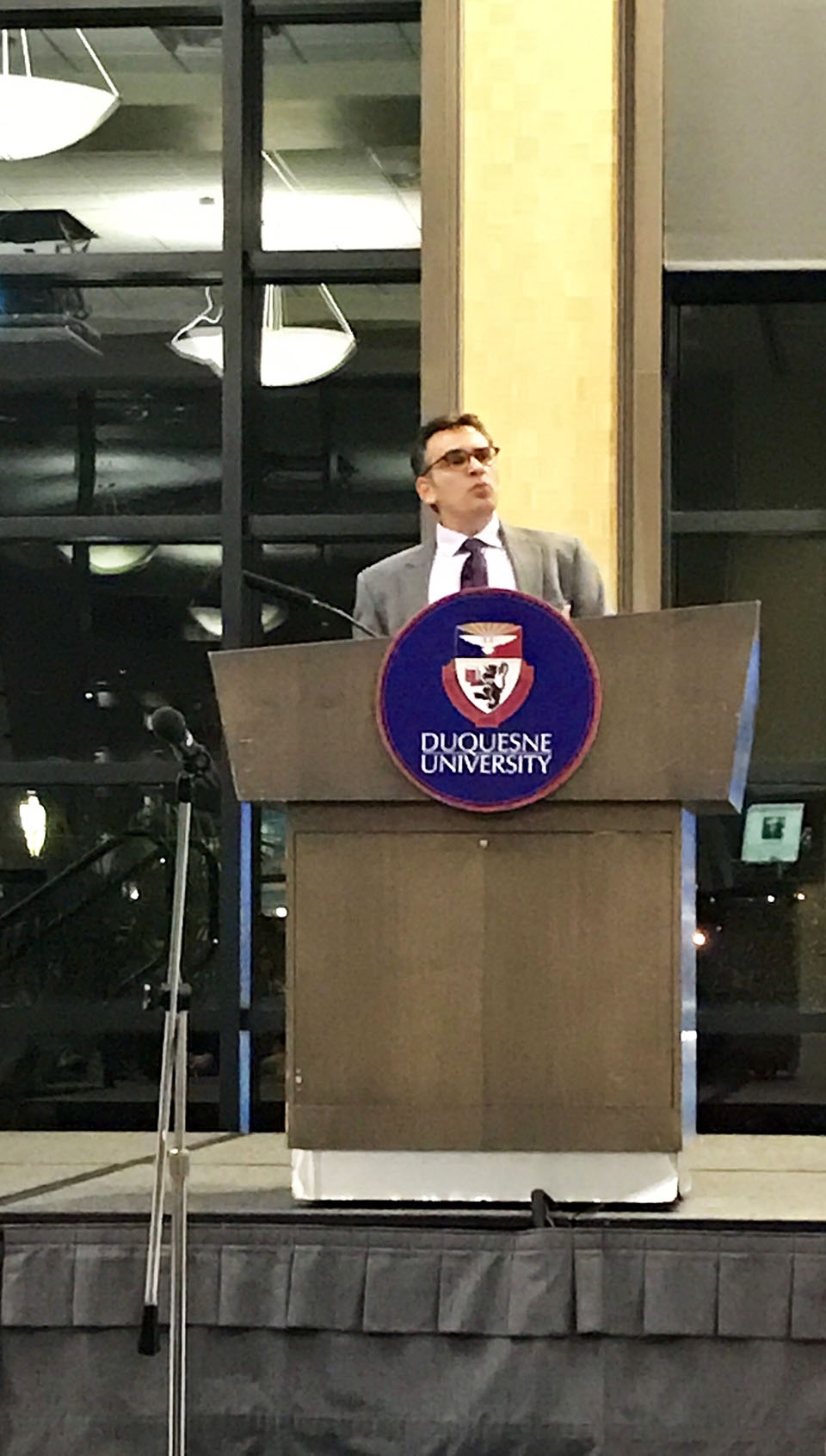
By Bridget Seelinger | The Duquesne Duke

The exhibit has many representations of the kidnappings. Here a young boy is taken after being captured only a few miles from Fort Pitt.
A war club, a tattered brown leather vest, a worn pair of moccasins and a wooden door riddled with several bullet holes.
These objects tell the fascinating, heart-wrenching tale of Indian captivity on the early American frontier, and are on display at the Fort Pitt Museum. The name of the exhibit is “Captured by Indians: War and Assimilation on the 18th Century Frontier” and it was created to remember the life of Massy Harbison, who escaped captivity with her newborn child.
The “Captured by Indians” exhibit began by showing the fear and terror that early settlers felt toward the Indians.
Charles Johnston, a settler who was captured by Indians said in a quote displayed, “No one who has not had a similar misfortune can imagine the terror I felt. I had been bred up with the horror of Indians and Indian cruelties, and now, suddenly, the thing I feared most had happened.”
The museum visitor is able to experience life on the trail as the Indians took the captives back to their villages and see the bonds that captives had to wear as they trekked hundreds of miles back into Indian lands. While learning of the evasive maneuvers that Indians employed to avoid detection, one is able to understand the fear that these captives felt.
Harbison recounts the days before she made her escape.
“They then beat me in a barbarous and inhuman manner, and took me and my two remaining children across the river to the island at Freeport. Then in addition to my former misery, they scalped my oldest child, a boy, five years of age, on the shore, close by where I was standing.”
After this, visitors enter an area of the exhibit where the Indians’ actions are explained. For example, if a member of an Indian tribe died of sickness, was killed in a raid or was enslaved by Europeans, the Indians would replace that member of the tribe by finding another. Testimony from those who were kidnapped describe the initiation process as being very emotional. A visitor comes to understand that the reasons that the Indians kidnapped early settlers were an ancient custom that dated back centuries and was a way to bring balance to their communities.
The exhibit ends with descriptions of the conflict that many of the captives felt if their families were able to buy them back, rescue them or barter some kind of exchange with the Indians. The exhibit begs the question of the influence of trauma on the kidnapped settlers. Despite the horror and violence that brought the settlers into the life they now found themselves, they often were able to adapt and found it difficult to return to the life they had.
The exhibit primarily features artifacts from the captured settlers and weapons that the Indians would use. There are several life-sized dioramas, including one of Massy Harbison hiding behind a large tree branch, clutching her infant child to her bosom. Admission is free for Duquesne students and within walking distance from campus.




